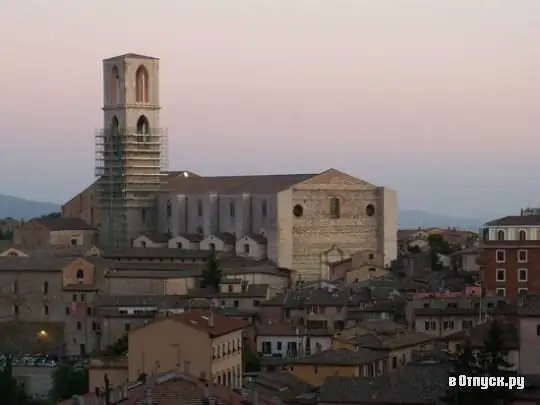
Description of the attraction
The Basilica of San Domenico, located in Perugia, is the largest religious building in the whole of Umbria. The church is notable for its late 16th century portal and Baroque double staircase.
The first building of the basilica was built in the early 14th century on the foundations of a pre-existing church known as San Domenico Vecchio, which by that time no longer met the needs of the growing Dominican order. Giorgio Vasari writes that the architect of the new church was Giovanni Pisano. The consecration of the hall-type basilica, which then dominated northern Europe, took place in 1459. Unfortunately, the church was destroyed in 1614-1615. Only ten years later, Carlo Maderno was able to restore its interior decoration - he also gave it a resemblance to St. Peter's Basilica in Rome. In accordance with the new project, the basilica had a central nave and two side chapels.
From the original building of San Domenico, only the cloister (1455-1579) and a huge Gothic window (21x8, 5 meters) next to the choir have survived to this day. This window can be seen in the fresco that is today kept in the Palazzo dei Priori. The bell tower was built in the years 1454-1500 by the architect from Lombardy Gasperino di Antonio. In those years, it was higher than today - it was shortened for reasons of structural stability.
The sights of the basilica are the tombstone of Pope Benedict XI, who died in Perugia in 1304, the altar by Agostino di Duccio and the wooden choir from the end of the 14th century. Once there was an altarpiece, painted by Fra Angelico, - now it is exhibited in the National Gallery of Umbria.
The cloister, attached to the basilica, houses the National Archaeological Museum of Umbria, which displays finds from prehistoric times, as well as from the Roman and Etruscan periods.






